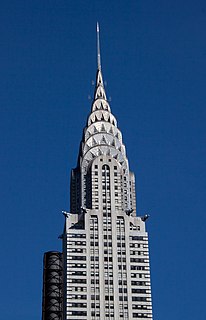
Art Deco, sometimes referred to as Deco, is a style of visual arts, architecture and design that first appeared in France just before World War I. Art Deco influenced the design of buildings, furniture, jewelry, fashion, cars, movie theatres, trains, ocean liners, and everyday objects such as radios and vacuum cleaners. It took its name, short for Arts Décoratifs, from the Exposition internationale des arts décoratifs et industriels modernes held in Paris in 1925. It combined modern styles with fine craftsmanship and rich materials. During its heyday, Art Deco represented luxury, glamour, exuberance, and faith in social and technological progress.

The Arts and Crafts movement was an international trend in the decorative and fine arts that developed earliest and most fully in the British Isles and subsequently spread across the British Empire and to the rest of Europe and America.

Art Nouveau is an international style of art, architecture, and applied art, especially the decorative arts, known in different languages by different names: Jugendstil in German, Stile Liberty in Italian, Modernisme català in Catalan, etc. In English it is also known as the Modern Style. The style was most popular between 1890 and 1910. It was a reaction against the academic art, eclecticism and historicism of 19th century architecture and decoration. It was often inspired by natural forms such as the sinuous curves of plants and flowers. Other characteristics of Art Nouveau were a sense of dynamism and movement, often given by asymmetry or whiplash lines, and the use of modern materials, particularly iron, glass, ceramics and later concrete, to create unusual forms and larger open spaces.

Wallpaper is a material used in interior decoration to decorate the interior walls of domestic and public buildings. It is usually sold in rolls and is applied onto a wall using wallpaper paste. Wallpapers can come plain as "lining paper", textured, with a regular repeating pattern design, or, much less commonly today, with a single non-repeating large design carried over a set of sheets. The smallest rectangle that can be tiled to form the whole pattern is known as the pattern repeat.
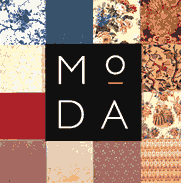
The Museum of Domestic Design and Architecture (MoDA) is a museum in North London, England, housing one of the most comprehensive collections of 19th- and 20th-century decorative arts for the home. The collection is designated as being of outstanding international value by Arts Council England.

Liberty style was the Italian variant of Art Nouveau, which flourished between about 1900 and 1914. It was also sometimes known as stile floreale, arte nouva, or stile moderne. It took its name from Arthur Lasenby Liberty and the store he founded in 1874 in London, Liberty Department Store, which specialized in importing ornaments, textiles and art objects from Japan and the Far East. Major Italian designers using the style included Carlo Bugatti, Raimondo D'Aronco, Eugenio Quarti, and Galileo Chini. The major event of the style was the 1902 Turin International Exposition, which featured by works of both Italian designers and other Art Nouveau designers from around Europe.

Christopher Dresser was a British designer and design theorist, now widely known as one of the first and most important, independent designers. He was a pivotal figure in the Aesthetic Movement and a major contributor to the allied Anglo-Japanese or Modern Style, both of which originated in England and had long-lasting international influence.

Morris, Marshall, Faulkner & Co. (1861–1875) was a furnishings and decorative arts manufacturer and retailer founded by the artist and designer William Morris with friends from the Pre-Raphaelites. With its successor Morris & Co. (1875–1940) the firm's medieval-inspired aesthetic and respect for hand-craftsmanship and traditional textile arts had a profound influence on the decoration of churches and houses into the early 20th century.

Charles Francis Annesley Voysey was an English architect and furniture and textile designer. Voysey's early work was as a designer of wallpapers, fabrics and furnishings in a Arts and Crafts style and he made important contribution to the Modern Style, and was recognized by the seminal The Studio magazine. He is renowned as the architect of several country houses.
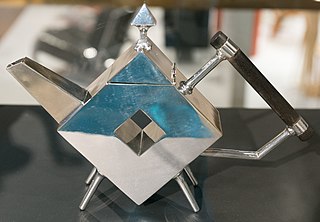
The Anglo-Japanese style developed in the United Kingdom though the Victorian period and early Edwardian period from approximately 1851 to 1910's, when a new appreciation for Japanese design and culture influenced how designers and craftspeople made British art, especially the decorative arts and architecture of England, covering a vast array of art objects including ceramics, furniture and interior design. Important centres for design included London and Glasgow.

. It is the first Art Nouveau style worldwide, and it represents the evolution of Arts and Crafts movement which was native to Great Britain. Britain not only provided the base and intellectual background for the Art Nouveau which was adapted by other countries to give birth to local variants, they also played an over-sized role in its dissemination and cultivation through the Liberty department store and The Studio magazine. The most important person in the field of design in general and architecture, in particular, was Charles Rennie Mackintosh. He created one of the iconic symbols of the movement, known as the Mackintosh rose or Glasgow rose. The Glasgow school was also of tremendous importance, particularly due to a group closely associated with Mackintosh, known as The Four. The Liberty store nurturing of style gave birth to two metalware lines, Cymric and Tudric.
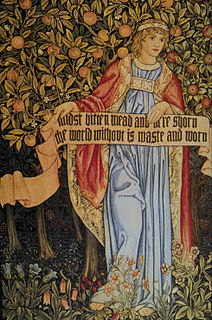
John Henry Dearle was a British textile and stained-glass designer trained by the artist and craftsman William Morris who was much influenced by the Pre-Raphaelite Brotherhood. Dearle designed many of the later wallpapers and textiles released by Morris & Co., and contributed background and foliage patterns to tapestry designs featuring figures by Edward Burne-Jones and others. Beginning in his teens as a shop assistant and then design apprentice, Dearle rose to become Morris & Co.'s chief designer by 1890, creating designs for tapestries, embroidery, wallpapers, woven and printed textiles, stained glass, and carpets. Following Morris's death in 1896, Dearle was appointed Art Director of the firm, and became its principal stained glass designer on the death of Burne-Jones in 1898.

Désirée Lucienne Lisbeth Dulcie Day OBE RDI FCSD was one of the most influential British textile designers of the 1950s and 1960s. Day drew on inspiration from other arts to develop a new style of abstract pattern-making in post-war British textiles, known as ‘Contemporary’ design. She was also active in other fields, such as wallpapers, ceramics and carpets.

Mary Lillian White later Mary Dening was an English textile designer known for several iconic textile prints of the 1950s. Her designs were very popular and extensively copied in many 1950s homes, as well as in cabins aboard the RMS Queen Mary and at Heathrow Airport. She was also a commercial potter and ceramist, who in the 1960s founded Thanet Pottery, in partnership with her brother David White.

George Henry Walton, was a noted Scottish architect and designer of remarkable diversity.

Ise katagami (伊勢型紙) is the Japanese craft of making paper stencils for dyeing textiles. It is designated one of the Important Intangible Cultural Properties of Japan. The art is traditionally centered on the city of Suzuka in Mie Prefecture. This is good for making a certain shape or picture within your project. It is different from Ise washi though both are made in Mie Prefecture.
Marion Victoria Dorn also known as Marion Dorn Kauffer was a textile designer primarily in the form of wall hangings, carpeting and rugs, however she is also known to have produced wallpaper, graphics, and illustrations. Known for her significant contributions to modern British interiors in particular for her 'sculpted' carpets, she contributed to some of the best-known interiors of the time including the Savoy Hotel, Claridges, the Orion and the Queen Mary. In the late 1930s and early 1940s she created moquette fabric designs for use in London Transport passenger vehicles.
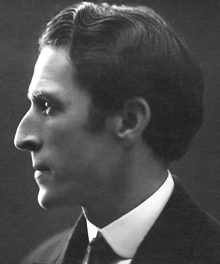
Paul Follot was a French designer of luxury furniture and decorative art objects before World War I (1914–18). He was one of the leaders of the Art Deco movement, and had huge influence in France and elsewhere. After the war he became head of the Pomone decorative art workshop of Le Bon Marché department store, making affordable but still elegant and high-quality work.
Félix Albert Anthyme Aubert, born 24 May 1866, died 1940 both in Langrune-Sur-Mer, was a French artist who was part of the decorative arts group Les Cinq with Alexandre Charpentier, Tony Selmersheim, Jean Dampt and Étienne Moreau-Nélaton, which later expanded to become the Art dans Tout movement.
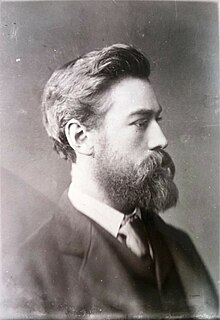
Arthur Silver (1853–1896) was a designer and founder of the Silver Studio. He was born in Reading in 1853. His grandfather had been in the cabinet-making business and his father, James Silver, was an upholsterer.




















